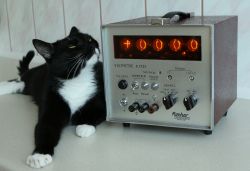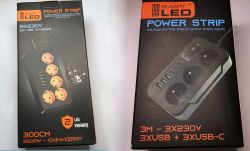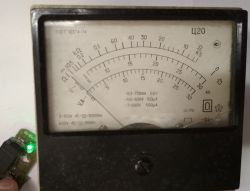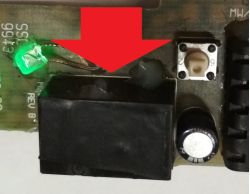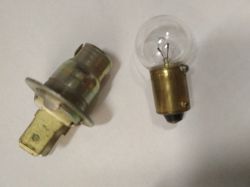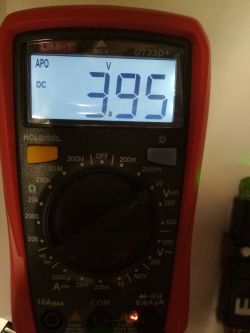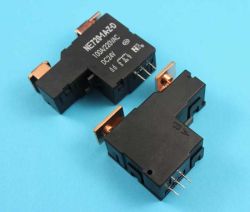Some time ago there were several articles on our forum about basic issues, min. <br/span> Some time ago, there were several articles on basic issues in our forum, including "How to check a fuse?", and although several people thought that the subject was too obvious, I would argue that .... maybe not quite. I believe that people, even those working in the industry, often get "lectured" on this very type of measurement.... My article today will focus specifically on the relay and how not to be fooled yourself when checking it. The situation was excellent because I had just such a faulty component. Nothing was simulated here. So I thought I would present and describe the situation.
Of course, I am talking about electromagnetic relays, which are widely used in a variety of electrical, electronic and automotive equipment. It should be remembered, however, that there are also other designs, but not about that now.
As for the basics, principles of operation, markings, symbols - I refer to the literature, the Internet or even our forum:
https://www.elektroda.pl/rtvforum/topic3102772.html
Here we focus only on how to check such an element.
And then there is our defective hero of the episode. A small relay in a black housing. Mounted on a PCB, this is the module from the car. Pressing the momentary tact switch visible on the right switches on the relay's operating contact, which applies 12V to the module's output. Another press switches it off. I deliberately do not show the whole circuit, how it is controlled etc. as I want to show, on this particular example, the operation, behaviour of the damaged relay itself . The green LED does not have any meaning here, please do not be confused by it .
.
.
We start the test, module driven, multimeter connected at the output, like a receiver. When switched on, full voltage appears, as if everything should be working. Voltage a little below 12V because the whole circuit was powered from just such a voltage.
.
Well, maybe a more expensive multimeter will detect some anomalies? Check out the video to see what it looks like with the Sanwa.
Everything looks as it should all the time...
How about an old analogue multimeter?
.
None of the instruments showed any abnormalities....
LED with resistor? In the video below, the green LED on the left connected in series with a resistor, plugged into the output, as a receiver.
.
Nothing of the methods so far has caused the relay to fail. And let me remind you that it is faulty! .
.
And an ordinary 12V low-power bulb?
.
In this case finally something starts to happen, The output voltage drops, it does not reach 12V, the bulb does not light up completely, it dims.
.
.
Only the last test showed the damage. The working contacts of the relay may be responsible for this symptom, which qualifies the relay in its entirety for replacement. This article was intended to show that sometimes just checking with a multimeter or suggesting the LED indication is not always correct. In a case like this, the test must be performed under load. Traditional incandescent lamps with a voltage and wattage adapted to the component under test are ideal for this purpose.Sometimes flickering, dimming, incorrect operation of the receiver can be observed immediately. The use of too high a load can only do harm here; too low a load will not always reveal the fault. Finally, I would like to remind you that we were operating at around 12V here, so you can afford such experiments; if you are checking components at e.g. 230V, do not do such tests for safety reasons!
Of course, I am talking about electromagnetic relays, which are widely used in a variety of electrical, electronic and automotive equipment. It should be remembered, however, that there are also other designs, but not about that now.
As for the basics, principles of operation, markings, symbols - I refer to the literature, the Internet or even our forum:
https://www.elektroda.pl/rtvforum/topic3102772.html
Here we focus only on how to check such an element.
And then there is our defective hero of the episode. A small relay in a black housing. Mounted on a PCB, this is the module from the car. Pressing the momentary tact switch visible on the right switches on the relay's operating contact, which applies 12V to the module's output. Another press switches it off. I deliberately do not show the whole circuit, how it is controlled etc. as I want to show, on this particular example, the operation, behaviour of the damaged relay itself . The green LED does not have any meaning here, please do not be confused by it
.
We start the test, module driven, multimeter connected at the output, like a receiver. When switched on, full voltage appears, as if everything should be working. Voltage a little below 12V because the whole circuit was powered from just such a voltage.
.
Well, maybe a more expensive multimeter will detect some anomalies? Check out the video to see what it looks like with the Sanwa.
Everything looks as it should all the time...
How about an old analogue multimeter?
None of the instruments showed any abnormalities....
LED with resistor? In the video below, the green LED on the left connected in series with a resistor, plugged into the output, as a receiver.
Nothing of the methods so far has caused the relay to fail. And let me remind you that it is faulty!
And an ordinary 12V low-power bulb?
.
In this case finally something starts to happen, The output voltage drops, it does not reach 12V, the bulb does not light up completely, it dims.
.
Only the last test showed the damage. The working contacts of the relay may be responsible for this symptom, which qualifies the relay in its entirety for replacement. This article was intended to show that sometimes just checking with a multimeter or suggesting the LED indication is not always correct. In a case like this, the test must be performed under load. Traditional incandescent lamps with a voltage and wattage adapted to the component under test are ideal for this purpose.Sometimes flickering, dimming, incorrect operation of the receiver can be observed immediately. The use of too high a load can only do harm here; too low a load will not always reveal the fault. Finally, I would like to remind you that we were operating at around 12V here, so you can afford such experiments; if you are checking components at e.g. 230V, do not do such tests for safety reasons!
Cool? Ranking DIY




